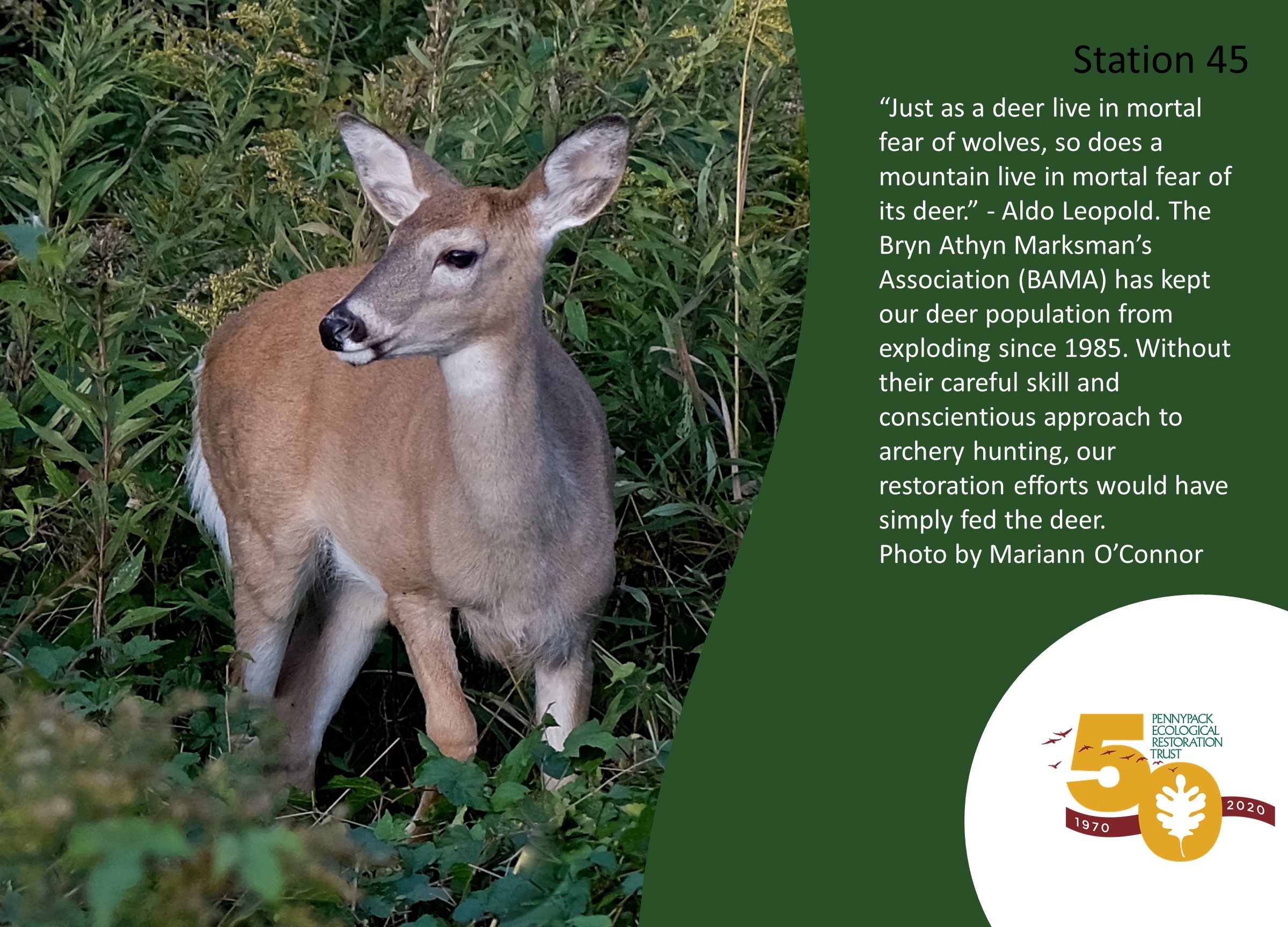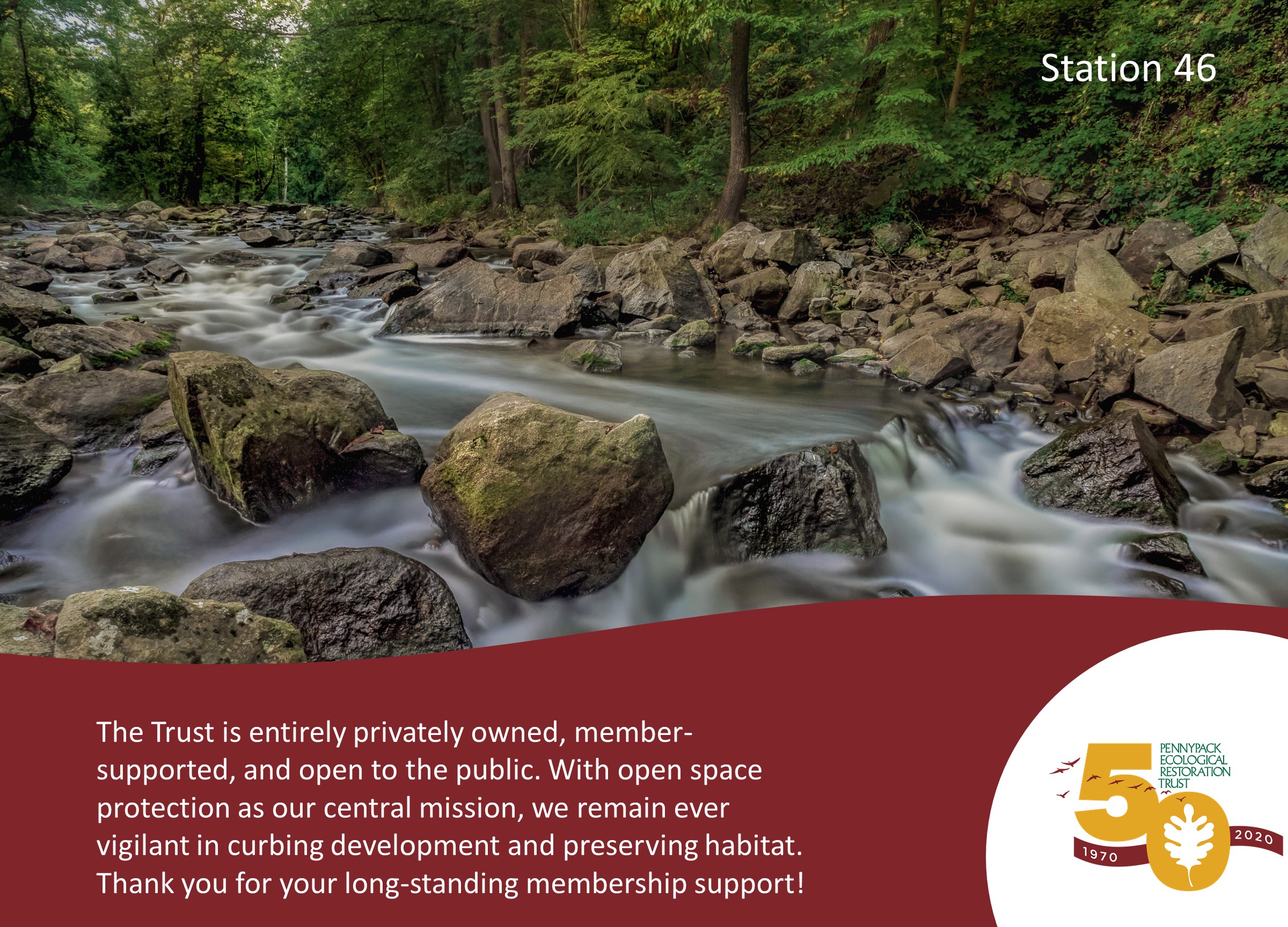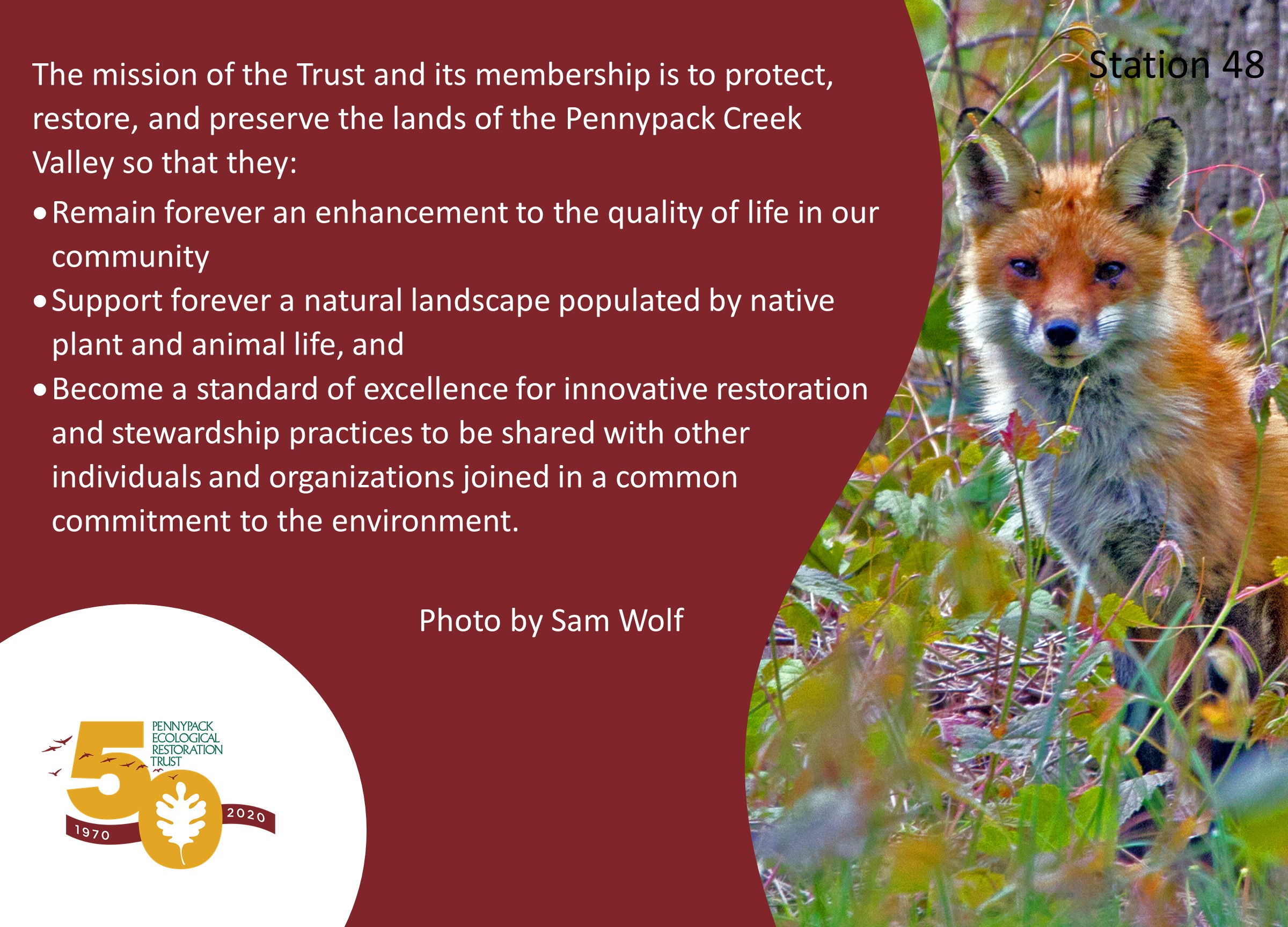50 Years of Conservation in the Pennypack Creek Watershed
A Brief History of the Pennypack Ecological Restoration Trust
The Pennypack Ecological Restoration Trust is a private, non-profit land conservancy located in Huntingdon Valley, Pennsylvania, 15 miles northeast of central Philadelphia. As the steward of 852 acres of protected meadows, woodlands and floodplain forest, the Trust manages Montgomery County’s second-largest privately owned natural area that is open to the public. The lands within the Trust’s natural area, the Pennypack Preserve, are located in the townships of Abington, Upper Moreland and Lower Moreland and in the Borough of Bryn Athyn. Over 1,200 dues-paying members support the Trust, and the preserve hosts 20,000 visitors annually.
The mission of the Pennypack Ecological Restoration Trust is to steward the Pennypack Preserve natural area as an important component of the region’s natural areas network, and to educate and encourage people to appreciate, enjoy, and protect the Preserve’s native ecosystems.
The Pennypack Trust was founded in 1970 as a membership-based environmental group called the Pennypack Watershed Association whose primary mission was to improve water quality in the Pennypack Creek’s rapidly suburbanizing watershed. In 1975, the Association’s Board of Directors adopted a Master Plan for preserving undeveloped and environmentally sensitive land in the central watershed, identifying 855 acres of steep slopes, wetlands, and floodplain forests that were deserving of protection. In 1976, the Association began to assemble the Pennypack Preserve natural area through a combination of land donations, purchases, and conservation easements.
By 1993, the watershed association had acquired 480 acres. Meanwhile, during the previous two decades, water quality in Pennypack Creek had consistently improved as industrial and municipal wastewater treatment plants upgraded their facilities. Because water quality was increasingly governed by diffuse non-point sources (i.e., suburban runoff) that were difficult to address, the organization decided to redirect its efforts to the stewardship and restoration of the land it had acquired and to rename itself the Pennypack Ecological Restoration Trust.
Since 1993, the Trust has protected 353 acres, bringing the total land protected to 833 acres. The new acreage includes the 160-acre Raytharn Farm, a former sheep farm, whose conversion to native grasslands is providing a haven for species of meadow-nesting birds that are threatened on the East Coast. Through a 2005 revision of its original 1975 Master Plan, the Trust has identified over 200 additional acres of unusual shrub swamp wetlands, old fields, and maturing forests that are worthy of protection, and the organization has committed itself to conserving these lands in the future as they become available.
Active restoration of the lands protected in the Pennypack Preserve is apparent everywhere. For example, the Trust’s stewardship staff and volunteers have planted over 12,000 trees since 1990. Large tracts that had been overwhelmed by non-native vines just a few years ago now support young forest. All of Raytharn Farm has been planted with native grasses. And, gaps in the tree canopy of three ancient forests have been planted with young trees to replace aging giants.
The Pennypack Trust works cooperatively with other regional conservation organizations to promote ecological restoration practices in land stewardship. In addition, the Trust frequently hosts land management practitioners, volunteers, and university-level students and researchers who come for exposure to the techniques and philosophy of ecological restoration.

















































